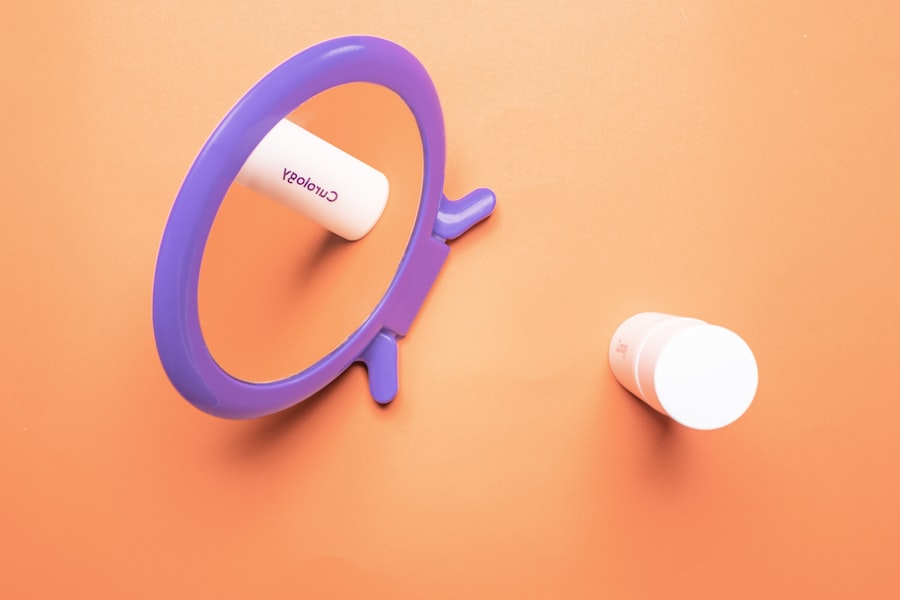Laser hair removal has become a popular choice for those seeking a long-term solution to unwanted hair. This method utilizes concentrated beams of light to target and destroy hair follicles, effectively reducing hair growth over time. As you consider this option, it’s essential to understand how the process works.
The laser emits a specific wavelength of light that is absorbed by the pigment in the hair. This absorption generates heat, which damages the follicle and inhibits future hair growth. The procedure is typically performed in a series of sessions, as hair grows in cycles, and not all hair is in the same growth phase at the same time.
When you undergo laser hair removal, you may experience some discomfort, often described as a sensation similar to a rubber band snapping against the skin. However, many clinics offer cooling devices or topical anesthetics to help minimize this sensation. The treatment is generally quick, with small areas taking only a few minutes and larger areas requiring more time.
As you embark on this journey, it’s crucial to have realistic expectations regarding the results. While many individuals experience significant hair reduction, complete hair removal is not guaranteed, and maintenance sessions may be necessary to achieve optimal results.
Key Takeaways
- Laser hair removal uses concentrated light to target and destroy hair follicles, resulting in long-term hair reduction.
- Potential side effects of laser hair removal may include redness, swelling, and skin irritation, which are usually temporary.
- Skin damage risks associated with laser hair removal include burns, blistering, and changes in skin pigmentation.
- Factors that influence skin damage during laser hair removal include skin type, hair color, and the skill of the technician performing the procedure.
- To minimize skin damage during laser hair removal, it is important to choose a reputable and experienced provider, and to follow pre- and post-treatment care instructions.
- Aftercare for laser hair removal to prevent skin damage may include avoiding sun exposure, using gentle skincare products, and keeping the treated area clean and moisturized.
- Seeking professional advice for laser hair removal is crucial to assess individual skin and hair characteristics, and to determine the most suitable treatment plan.
- Alternatives to laser hair removal for skin safety include shaving, waxing, and depilatory creams, as well as other non-laser light-based hair removal methods.
Potential Side Effects of Laser Hair Removal
While laser hair removal is considered safe for most individuals, it’s important to be aware of potential side effects that may arise during or after the procedure. Common side effects include temporary redness and swelling in the treated area, which usually subsides within a few hours to a couple of days. You might also notice some mild discomfort or a tingling sensation following the treatment.
These effects are generally mild and can be managed with over-the-counter pain relief if necessary. In some cases, more serious side effects can occur, although they are rare. You may experience changes in skin pigmentation, particularly if you have darker skin tones or if the procedure is performed incorrectly.
Hyperpigmentation can lead to dark spots, while hypopigmentation can result in lighter patches on your skin. Additionally, there is a risk of blistering or scarring if the laser settings are not appropriately adjusted for your skin type. Being informed about these potential side effects can help you make an educated decision about whether laser hair removal is right for you.
Skin Damage Risks Associated with Laser Hair Removal

One of the primary concerns surrounding laser hair removal is the risk of skin damage. The procedure involves the application of intense light energy to the skin, which can lead to various forms of damage if not performed correctly. For instance, if the laser is set too high or used on inappropriate skin types, it can cause burns or other injuries to the skin’s surface.
This risk emphasizes the importance of choosing a qualified practitioner who understands how to tailor the treatment to your specific needs. Moreover, individuals with sensitive skin or certain skin conditions may be at a higher risk for adverse reactions. If you have a history of keloid scarring or other dermatological issues, it’s crucial to discuss these concerns with your practitioner before undergoing treatment.
Understanding these risks allows you to take proactive steps in ensuring your safety during the procedure and helps you weigh the benefits against potential drawbacks.
Factors that Influence Skin Damage
| Factor | Influence on Skin Damage |
|---|---|
| UV Radiation | Causes sunburn, premature aging, and increases the risk of skin cancer |
| Pollution | Can lead to skin inflammation, acne, and premature aging |
| Smoking | Reduces blood flow to the skin, leading to wrinkles and a dull complexion |
| Poor Diet | Lack of essential nutrients can result in dry, dull, and unhealthy skin |
| Stress | Can exacerbate skin conditions such as acne, eczema, and psoriasis |
Several factors can influence the likelihood of skin damage during laser hair removal. One significant factor is your skin type and tone. Lighter skin tones tend to respond better to laser treatments because there is a greater contrast between the hair and skin color, allowing for more effective targeting of the hair follicles.
Conversely, darker skin tones may require specialized lasers that are designed to minimize damage to surrounding skin while still effectively treating unwanted hair. Another critical factor is the experience and skill level of the practitioner performing the procedure.
Additionally, pre-treatment care plays a role in minimizing risks; for example, avoiding sun exposure before your session can help protect your skin from potential damage during treatment. By being aware of these influencing factors, you can take steps to ensure a safer and more effective laser hair removal experience.
How to Minimize Skin Damage during Laser Hair Removal
To minimize the risk of skin damage during laser hair removal, it’s essential to follow specific guidelines before and during your treatment sessions. First and foremost, choose a reputable clinic with experienced practitioners who specialize in laser hair removal. Research their credentials and read reviews from previous clients to ensure you are in capable hands.
A skilled technician will assess your skin type and customize the treatment accordingly, which can significantly reduce the risk of adverse effects. Additionally, proper pre-treatment care is crucial for minimizing skin damage. You should avoid sun exposure for at least two weeks before your appointment, as tanned skin is more susceptible to burns and pigmentation changes.
It’s also advisable to refrain from using certain skincare products that may irritate your skin, such as retinoids or exfoliants, leading up to your treatment. By taking these precautions, you can help ensure that your skin remains healthy and resilient throughout the laser hair removal process.
Aftercare for Laser Hair Removal to Prevent Skin Damage

Aftercare is just as important as pre-treatment preparation when it comes to preventing skin damage following laser hair removal. Immediately after your session, you may notice some redness or swelling in the treated area; applying a cool compress can help alleviate these symptoms. It’s essential to keep the area clean and avoid any harsh products that could irritate your skin for at least a few days post-treatment.
In addition to maintaining cleanliness, you should also protect your skin from sun exposure after laser hair removal. Your skin will be more sensitive following the procedure, making it crucial to apply sunscreen with a high SPF whenever you go outside.
Staying hydrated and using gentle moisturizers can also aid in recovery and keep your skin looking its best after treatment.
Seeking Professional Advice for Laser Hair Removal
Before committing to laser hair removal, seeking professional advice is vital for ensuring that this method aligns with your goals and needs. A consultation with a qualified practitioner will allow you to discuss your concerns and expectations openly. During this meeting, they will assess your skin type and hair characteristics while explaining how the procedure works and what you can expect in terms of results and potential side effects.
Additionally, don’t hesitate to ask questions about their experience and training in performing laser hair removal procedures. A knowledgeable practitioner will be able to provide you with detailed information about their techniques and safety measures in place to minimize risks. This dialogue not only helps build trust but also empowers you with the information needed to make an informed decision about whether laser hair removal is right for you.
Alternatives to Laser Hair Removal for Skin Safety
If you’re concerned about the risks associated with laser hair removal but still want an effective solution for unwanted hair, several alternatives are available that prioritize skin safety. One popular option is electrolysis, which involves using an electric current to destroy individual hair follicles. This method is FDA-approved for permanent hair removal and can be suitable for all skin types and hair colors.
Another alternative is intense pulsed light (IPL) therapy, which uses broad-spectrum light rather than a focused laser beam. While IPL can be effective for hair reduction, it may require more sessions than laser treatments and may not be as precise in targeting specific hair follicles. Additionally, topical treatments such as depilatory creams or shaving can provide temporary solutions without the risks associated with more invasive procedures.
In conclusion, understanding laser hair removal involves recognizing both its benefits and potential risks. By being informed about side effects, factors influencing skin damage, and aftercare practices, you can make educated decisions regarding this popular cosmetic procedure. Whether you choose laser hair removal or explore alternative methods, prioritizing your skin’s health and safety should always be at the forefront of your choices.
If you are considering laser hair removal, you may be wondering if it causes any side effects. According to a recent article on inlaserhairremoval.com, laser hair removal is generally safe and effective, but some people may experience temporary redness or irritation after treatment. It is important to follow the aftercare instructions provided by your technician to minimize any potential side effects.
FAQs
What is laser hair removal?
Laser hair removal is a cosmetic procedure that uses a concentrated beam of light (laser) to remove unwanted hair. The laser targets the pigment in the hair follicles, damaging them and inhibiting future hair growth.
Does laser hair removal cause pain?
Laser hair removal may cause some discomfort, often described as a snapping or stinging sensation. However, most people find the discomfort to be tolerable. Some areas of the body may be more sensitive than others.
Does laser hair removal cause skin damage?
When performed by a qualified and experienced professional, laser hair removal is generally safe and does not cause skin damage. However, there is a small risk of temporary skin irritation, redness, or swelling after the procedure.
Does laser hair removal cause permanent hair removal?
Laser hair removal can lead to long-term hair reduction, but it is not always permanent. Some hair may eventually grow back, but it is often finer and lighter in color. Multiple sessions are usually required to achieve the best results.
Does laser hair removal cause side effects?
Common side effects of laser hair removal may include temporary skin irritation, redness, and swelling. In rare cases, the procedure can cause changes in skin pigmentation, blistering, or scarring. It is important to follow pre- and post-treatment care instructions to minimize the risk of side effects.





